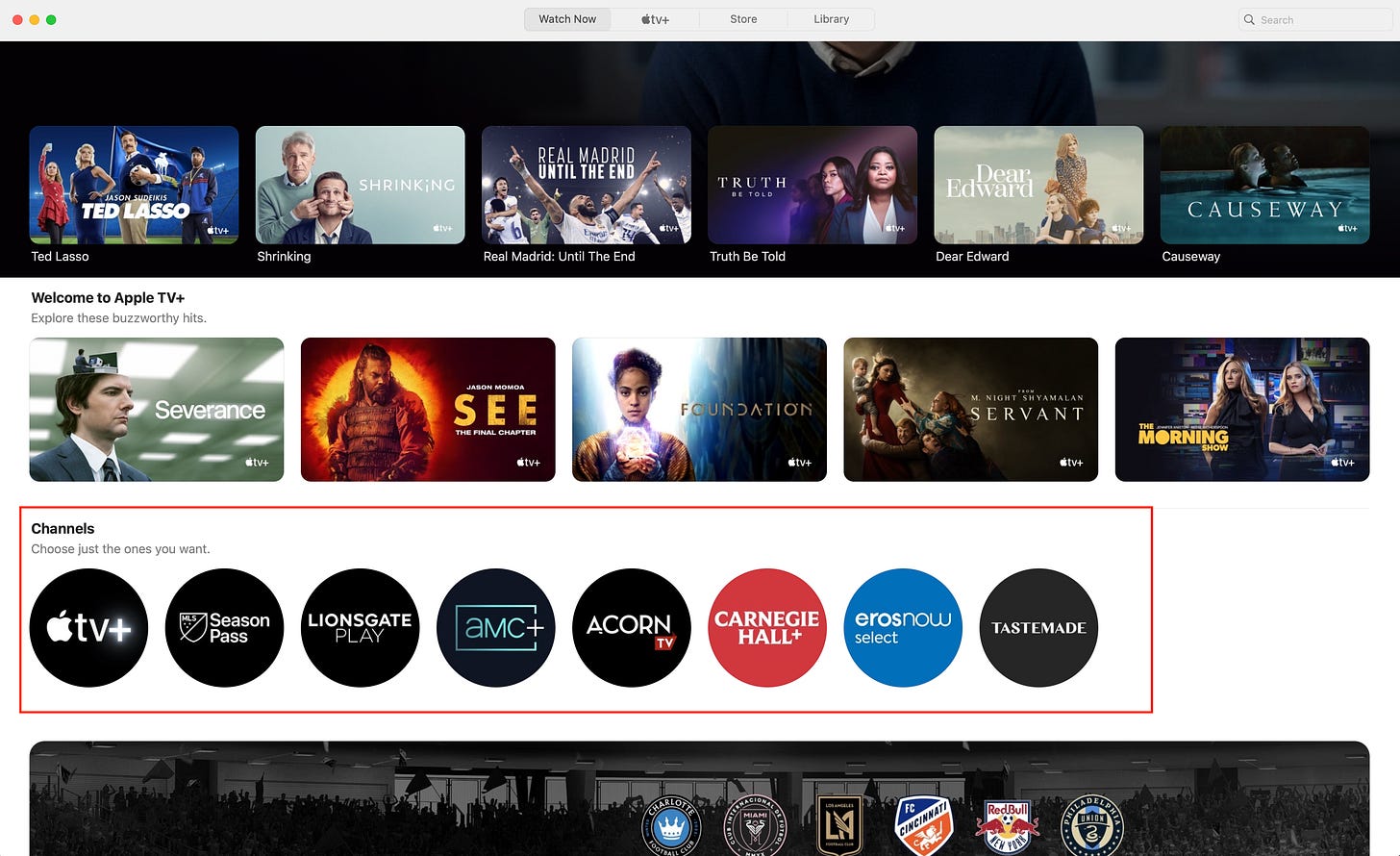Unbundling the content bundle
Content moved from being separate channels to a single subscription bundle, the time has come to move the other way.
CavinKare is an Indian company that is credited with bringing the Sachet revolution. A company engaged in the sales of personal care products; figured that more people would buy these products if they sold them in smaller quantities. The poor could suddenly afford it. The sales shot up.
Eventually, every FMCG company adopted this approach in India and even in other countries.
Often times it is possible to take an example from one industry and apply it to another.
Disney Streams
Disney rolled out its streaming service on the eve of the COVID lockdown in Feb 2020. It was sheer coincidence and a fortuitous one for them. I started this blog at about the same time to kill my boredom. One of the first pieces that I had written was about Disney and their entry into the streaming wars.
Disney had, just a few months earlier, acquired Fox’s entertainment catalogue. Fox was one of the first entrants in the Indian Cable Television market back in the early 90s. They brought ‘Star’ to India. They leveraged this presence to launch Hotstar in 2015, their streaming offering. Disney got this on a platter with over 300 million users!
They were set!
Disney+ Hotstar included entire catalogues from :
Marvel
Disney Animation
20th Century Fox
In addition to that, they also had select content from
National Geographic
Star (Regional and National)
HBO
Showcase
ABC Studios
Star Sports
In addition to this, they had the rights to :
Indian Premier League
Formula 1
English Premier League
Champions League
India Cricket Team International Matches
They had a formidable content lineup. Fast forward 2 years…
“Starting 31st March, HBO content will be unavailable on Disney+ Hotstar. You can continue enjoying Disney+ Hotstar’s vast library of content spanning over 100,000 hours of TV Shows and Movies in 10 languages and coverage of major global sporting events,” the streaming service said on Twitter.
[…]
It is important to note that Disney also renewed the rights for Formula One. Previously, F1 races were aired on Star Sports TV channels and on the Disney+ Hotstar platform. Rather, Motor Sport Formula 1’s OTT video platform F1 TV entered the Indian market last month, ahead of 2023 FIA Formula One World Championship.
Source: Inc42
Here is the funny thing though.
When Hotstar started its subscription service in India, it cost us Rs 1000 ($12) per year. In 2022, they increased it to Rs 1500 ($18) per year. I was like what atrocity is this. 50% increase in one go. This is why inflation is high!
Mind you, I was paying Rs. 650 ($8) per month for Netflix at the same time. The quality of content on Netflix is nowhere close to what Hotstar has to offer.
Then last week just before the season-opening F1 race, I realised that Hotstar would not be streaming the race! I checked out F1 TV. It was Rs 2499 ($30) per year, I fumed. Then I justified it. It’s like Rs 100 ($1.25) per race. Fuck it, let me just pay it.
The moral of the story - Disney sucked at being able to monetise me as a user.
The Great Unbundling
The greatest asset in any B2C business is distribution. Disney has no shortage of distribution. They are a major film distributor across the planet and have been distributing TV shows for 7 decades. Their fault was believing in convergence and putting all their eggs in one basket.
Makes me wonder if sachetisation is the way for all businesses that have been converging. Should they unbundle and diverge?
If Disney had decided to use its immense distribution to sell all of the products listed above as separate pieces, it would have earned an order of magnitude more. Sure, it would have required a lot more selling and marketing, but would it not have been worth it? They would have also been able to keep IPL, F1 and HBO happy, driving greater revenue for them.
Both Apple and Amazon have been taking baby steps in this direction. They both offer channel subscriptions.
Apple TV
Prime Video
They are taking advantage of the distribution that they have built and offering a variety of channels as separate subscriptions. Neither company discloses how much they make from these partnerships and given how large their revenue base is, it would probably be a rounding error even if it is hundreds of millions.
Disney should have probably unbundled and made a similar play. They did not. Now, their Indian offering Hotstar is being eviscerated bit by bit.
Would the service be able to survive these body blows? Would they try some sort of unbundling?



